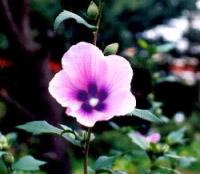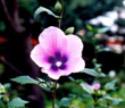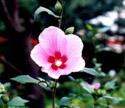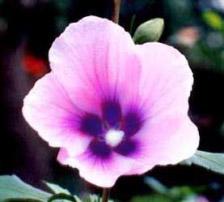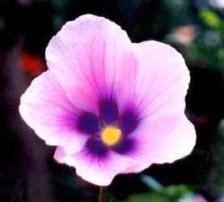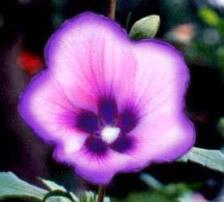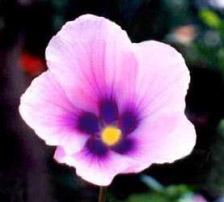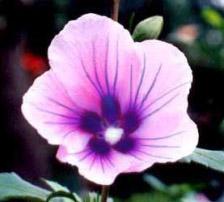But this flower is one of many. Take a look at the pictures below. Now it should be much easier to see what is different about this flower.
Many of you have probably thought ahead and started to ask, “Why is the inside of this flower blue when the inside of all of the other flowers are red?” There must be something about this flower that makes it blue while the others are red. You may have also asked, "Are all of the blue colored flowers the same?" The only way to answer this is to collect as many blue flowers as possible.
So that is what we did. We now have a collection of 14 different blue flowers. Shown below are close-up images of five of them.
-
Flower 1
-
Flower 2
-
Flower 3
-
Flower 4
-
Flower 5
Notice that there are many subtle differences in even the blue colored flowers. Two have yellow inner centers (Flower 2 and Flower 4). One has a thick outer purple rim (Flower 3). And one has enhanced purple intertwined streaks (Flower 5). Let us concentrate on the flowers with the yellow centers. If we had any indication that the process that resulted in the yellow centers was due to, or caused, the flowers to be blue, we would invest a lot of our time and energy in studying the yellow centers. Now consider the flower with the purple rim (Flower 3). How important is that feature as it relates to whether the flower is blue or not? If we now told you that after looking at 100 different types of flowers, 89 of them also had a similar purple rim, that would probably lead you to believe that the purple rim does not have anything to do with why the flower is blue, and it would be much less important to devote resources to study this particular feature.
The analogy should be clearer now. The red colored flower is a variant of the Rose of Sharon, first described in the Song of Songs 2:1. The blue colored flowers represent young patients with GIST. Prior to the inaugural Pediatric GIST clinic, we did not know how many patients would have similar features in their medical histories. What we found was that young patients ranged in clinical course from those with no recurrence of tumor to those who have never been free of tumor. Symptoms and treatments also differed markedly.
It is our belief that as we continue to see all young patients with GIST and adults with wildtype GIST, that we will soon be in a position to determine what changes are common to patients and are fundamentally important to the tumor process.
Some of the questions you may have asked when reading about the flowers are:
- Why is the flower blue?
- Are all of the blue flowers the same?
- Is there a way to change the blue flowers back to red?
The questions that we posed during the inaugural Pediatric GIST clinic were:
- What causes pediatric GIST?
- Are all patients with pediatric GIST similar?
- What treatments are available for young patients with GIST?
The flower analogy most readily explains the format we chose for this clinic. Our belief is that the best way to study Pediatric GIST is to amass information for every young patient with GIST. The inaugural clinic was very successful in this regard and provided the foundation upon which to expand our knowledge of this rare tumor and to begin answering some of these important questions.
